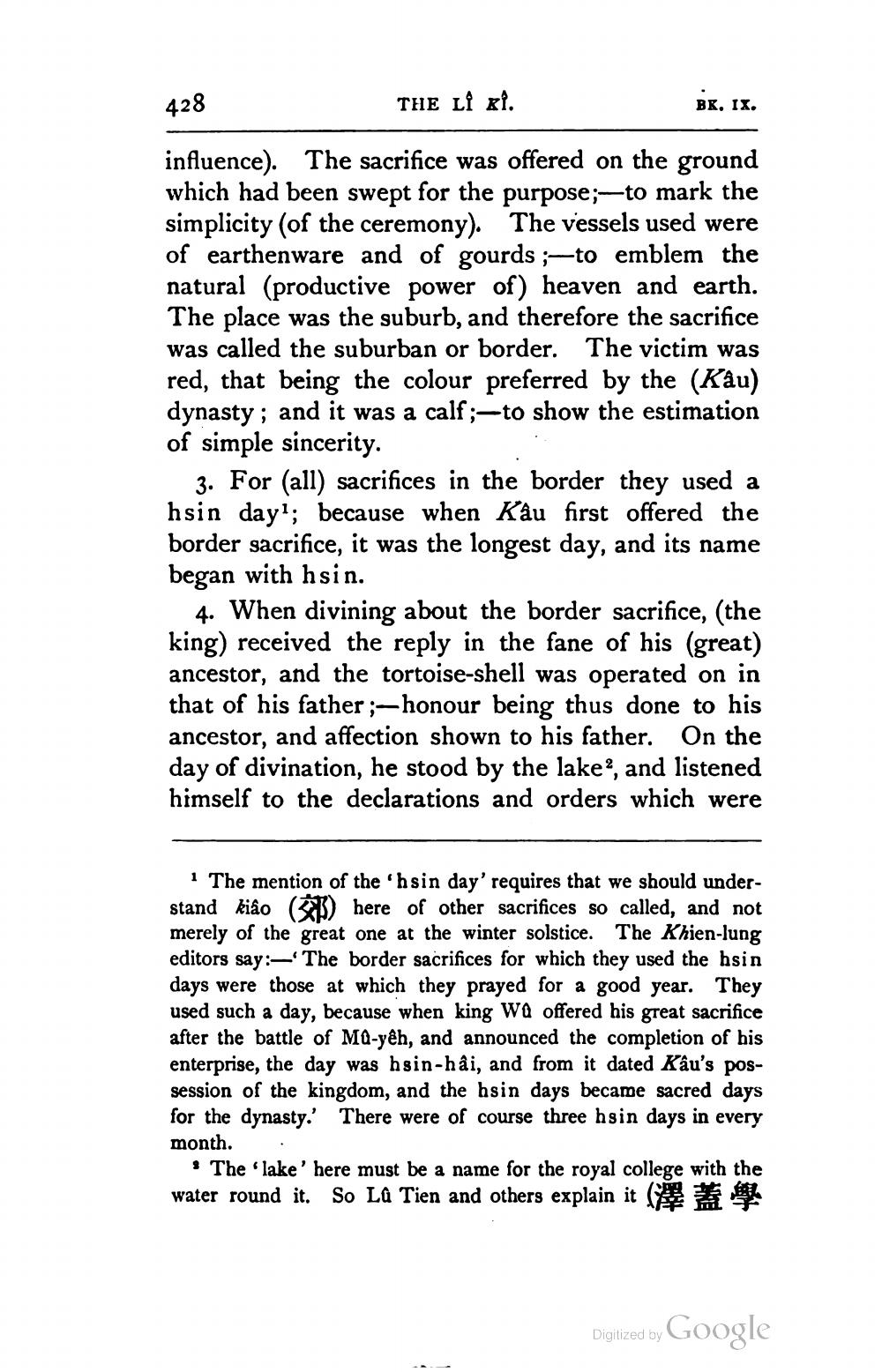________________
THE LI KI.
influence). The sacrifice was offered on the ground which had been swept for the purpose; to mark the simplicity (of the ceremony). The vessels used were of earthenware and of gourds;-to emblem the natural (productive power of) heaven and earth. The place was the suburb, and therefore the sacrifice was called the suburban or border. The victim was red, that being the colour preferred by the (Kâu) dynasty; and it was a calf;-to show the estimation of simple sincerity.
3. For (all) sacrifices in the border they used a hsin day1; because when Kâu first offered the border sacrifice, was the longest day, and its name began with hsin.
When divining about the border sacrifice, (the king) received the reply in the fane of his (great) ancestor, and the tortoise-shell was operated on in that of his father;-honour being thus done to his ancestor, and affection shown to his father. On the day of divination, he stood by the lake, and listened himself to the declarations and orders which were
428
BK. IX.
1 The mention of the 'hsin day' requires that we should understand kião () here of other sacrifices so called, and not merely of the great one at the winter solstice. The Khien-lung editors say: 'The border sacrifices for which they used the hsin days were those at which they prayed for a good year. They used such a day, because when king Wû offered his great sacrifice after the battle of Mû-yêh, and announced the completion of his enterprise, the day was hsin-hâi, and from it dated Kâu's possession of the kingdom, and the hsin days became sacred days for the dynasty.' There were of course three hsin days in every month.
The 'lake' here must be a name for the royal college with the water round it. So Lû Tien and others explain it (
Digitized by
Google




